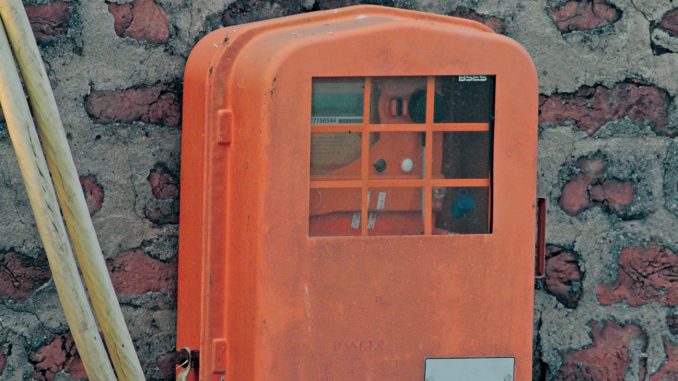
Over the past couple of years, there has been an increasing focus on the implementation of smart meters in the country. It is a key component of various central government schemes and programmes such as the Ujwal Discom Assurance Yojana (UDAY), the Integrated Power Development Scheme (IPDS) and smart grid pilots. Energy Efficiency Services Limited (EESL) is implementing the Smart Meter National Programme (SMNP) for replacing 250 million conventional meters. Besides this, various states have issued mega tenders for the procurement and installation of smart meters. Notably, bulk tendering with demand aggregation has brought down meter prices. A look at the various central and state initiatives driving smart meter uptake in India…
UDAY
The National Tariff Policy, amended in January 2016, mandates the deployment of smart meters for all consumers with a consumption of more than 200 units per month. In line with this, smart meters are planned to be installed under UDAY for all consumers with a monthly consumption of more than 500 units by December 31, 2017, and for those with a consumption of 200-500 units per month by December 31, 2019. As of June 2019, about 4 per cent of the targeted 5.7 million smart meters have been installed for consumers with a monthly consumption of over 500 kWh under UDAY. For consumers in the 200-500 kWh category, smart meter deployment is only 3 per cent of the targeted 18.4 million. Only Sikkim and Puducherry have met their respective smart metering targets in both consumer categories, while Himachal Pradesh has met the target for the 200-500 kWh category. The progress rates of other states vary from 0 to 57 per cent.
 IPDS
IPDS
Launched in 2014, the IPDS envisages the installation of smart meters with supervisory control and data acquisition (SCADA) systems in all urban areas. A project cost of Rs 8.3 billion and a grant of Rs 5 billion have been approved by the government under the scheme. However, disbursements have been nil, as of February 2019. Nearly 4.1 million smart meters are targeted to be installed under the scheme by 21 discoms across 12 states. The states can either procure them on a stand-alone basis or through an aggregator such as EESL and PFC Consulting.
Smart grid pilots
The Ministry of Power (MoP) has sanctioned 12 smart grid pilot projects with 50 per cent funding from the government. All these projects (excluding the Smart Grid Knowledge Centre at Manesar) involve the implementation of advanced metering infrastructure (AMI), along with other functionalities such as outage management system, SCADA and demand response. The pilot projects envisage the implementation of 170,000 smart meters, of which over 132,000 have already been installed. Five smart grid projects under the National Smart Grid Mission (with 30 per cent funding from the MoP), which are currently under way, also entail AMI/smart meter implementation.
 Smart Meter National Programme
Smart Meter National Programme
EESL is implementing the SMNP under which it aims to replace 250 million conventional meters with smarter versions. EESL is implementing its proven model of bulk procurement, demand aggregation and monetisation of savings. The key components of projects executed under the SMNP are smart meters, head-end systems (HES), meter data management systems (MDMS), cloud and database, mobile applications and web portals. The meters supplied are equipped with general packet radio service (GPRS)-compatible network interface cards, and are IS 16444 and IS15949 Part II compliant.
Further, the meters have prepayment and net metering features, and are capable of time-of-day (ToD) and time-of-usage (ToU) metering. As a part of the contract, EESL, under the programme, undertakes system integration-related activities such as installation, testing, commissioning and integration of the AMI system; as well as field activities such as consumer indexing, meter installation and maintenance.
The duration of the programme is eight years and it is broadly divided into two phases. Under the built-up/go-live phase, essentially the first three years, the design, development and integration of the AMI solution is undertaken, and the projects’ go-live status is achieved. Under the operations and maintenance (O&M) phase, which is for the next five years, O&M of AMI would be done. For quality control purposes and timely execution of projects, the key performance indicators tracked under the programme include timely completion of consumer indexing and regular master data updates, availability of a reliable GPRS communication network, cloud infrastructure uptime, and turnaround time with respect to replacement and repair of smart meters.
With regard to the implementation of the SMNP, smart metering roll-out is being undertaken in select areas of the New Delhi Municipal Council (NDMC), Uttar Pradesh, Haryana, Bihar, Andhra Pradesh, Telangana, Rajasthan and the Tumkur Smart City. The total smart meter requirement across these states is 22.33 million. As of June 2019, 305,976 meters have been installed across New Delhi, Uttar Pradesh, Haryana, Bihar and Andhra Pradesh. State-wise, the highest number of meters under the programme has been installed in Uttar Pradesh, followed by New Delhi and Haryana. Recently, EESL issued an international competitive bidding tender for the procurement of 5 million smart meters to be installed across India. The tender, released in August 2019, is a part of EESL’s Scaling Up Demand Side Energy Efficiency Sector Project. For this, it has applied to the Asian Development Bank for financial asssistance.
The next few years are expected to see a significant policy push towards smart metering. The proposed amendments to the Electricity Act, 2003 mandate the use of smart meters. Recently, the MoP announced an ambitious target to convert all meters to smart prepaid meters over the next three years starting April 2019, entailing an estimated demand of 300 million smart meters. To conclude, smart meter deployment in India is slowly gaining ground though a complete shift to smart meters is still awaited.
